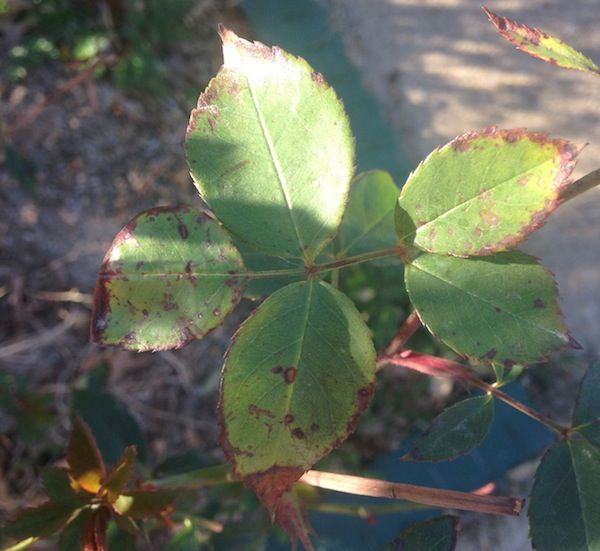Leaf Spot: Spring Rains are Wreaking Havoc on our Plants!
May 4, 2015 | By webadmin
We love all this recent spring rain we’re having. After years of persistent drought, our trees and established landscape plants will benefit from all the extra rain. If you have a rain barrel installed, you’ll have a rush of supplemental water through spring.
However, all this extra rainfall and mild temperatures also create the perfect conditions for fungal diseases to thrive and damage our plants. Leaf spot is a group of fungal diseases that we’re seeing all over Dallas right now. Could some of your plants have a leaf spot disease?
What is Leaf Spot?
The term “Leaf spot” is used to refer to a number of different fungal diseases that infect the leaves of plants. They typically cause brown, tan or black spots on the plant’s foliage. Depending on the type of disease, its characteristics can take on many forms. While most leaf spot diseases are caused by fungi, there are some that are caused by bacteria. However, most of the leaf spot diseases we’re seeing right now are fungal. Two types of leaf spot we’re seeing frequently are Black Spot on roses and Entomosporium leaf spot on Indian Hawthorn, Photinia and other shrubs.

Black spot on roses.
Black Spot on Roses: In spring, you’ll begin to see dark spots on foliage, with a yellow or black margin around the edge of the leaf. The spots can be very small or large enough to cover the entire leaf. Certain types of roses, such as hybrid teas, are more susceptible to black spot. Roses that receive too much shade or are watered in the evening are also more susceptible to black spot.
Entomosporium leaf spot: New foliage on plants like Indian hawthorn, photinia and other shrubs will be covered in bright red spots with yellow margins. In more mature leaves, the spots will have brown to light gray centers and a dark maroon border. Entomosporium leaf spot spreads quickly by splashes of water and spores that live in leaf litter below the plants. This leaf spot disease is responsible for the removal of many photinia shrubs around the Dallas area. Again, plants that are grown in too much shade or watered improperly are more susceptible to leaf spot damage.
Severe infections with either of these diseases, or other leaf spot diseases, can cause foliage to drop. While many trees and plants can handle some defoliation, if a newly planted or young specimen loses all of its leaves too early in the season, it could be a lost cause. It’s best to diagnose early and treat the plant if needed.
Protecting Plants from Leaf Spot
Here a ways you can protect plants year-round.
- Remove infected foliage and twigs. Fungal diseases are easily spread from plant to plant and from one leaf to the rest of the leaves. When detected early, removing infected plant tissue is a great way to protect healthy plants and foliage.
- Keep foliage dry. While rain is unavoidable, you can control your irrigation system. Always water at the soil level, not on top of the foliage. Adjust or replace sprinkler heads that spray water into the air and on top of your plants. Watering early in the morning so leaves have the daytime to dry off is a much better practice than to water at night. Fungal diseases will take hold in the cool, dark night much quicker than in the daytime.
- Replace plants. If a plant is heavily infected, removing the plant might be the best way to keep the rest of the landscape safe. Young plants or plants that are already in decline should be removed and replaced with varieties that are less susceptible to leaf spot diseases.
- Fungicides. In some instances, fungicides might be an appropriate treatment. Early detection and treatment is best. Spraying should be started at first bud break in spring then continued every two weeks. If a plant is heavily infected, fungicides may not always solve the problem.
- Prevention is key. Healthy, well-maintained plants will have the best chance of deterring fungal diseases. Plants that are malnourished, improperly watered or in the wrong type of sunlight are much more susceptible to all types of pests and disease. Keeping soil healthy by adding compost, worm castings and other nutritional amendments help keep roots healthy which keeps plants beautiful and vigorous.
Need help this spring maintaining your landscape? When we are on property grooming your landscape, we also keep an eye out for disease and pest problems that might arise. Our maintenance division can provide swift detection, diagnosis and treatment!
